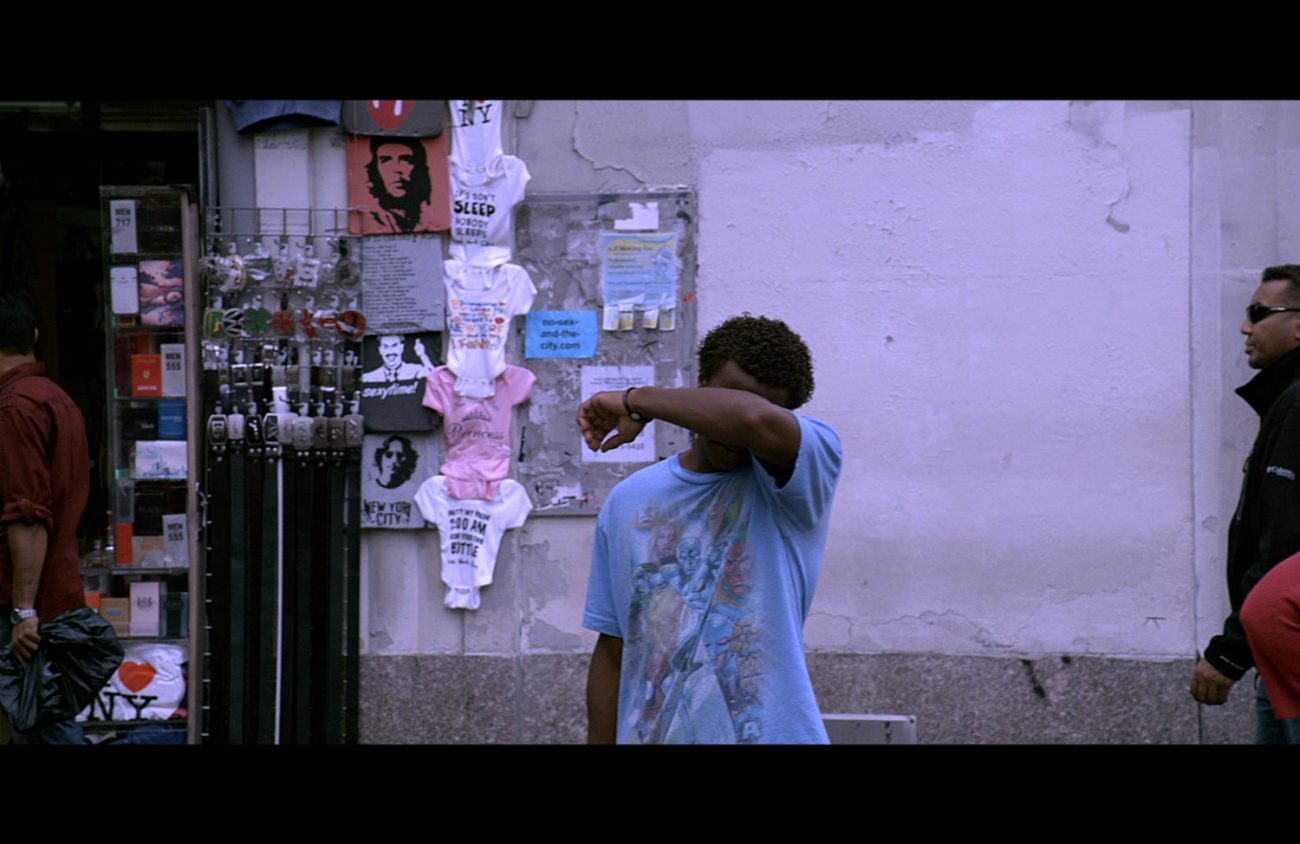James Nares might be called a Renaissance artist, though he is associated with the 1970’s No Wave movement, where he played in a band and made art in the street.
Nares makes objects, composes music and is a filmmaker, photographer and painter. The subjects of his paintings are lines. What could be simpler, right?
Not in Nares’ case.
He wants movement and randomness, and he allows himself only a few seconds and a single gesture, even when the line he’s painting is wall-sized. He’s created his own paintbrushes, which he loads with paint and then twists and turns as he’s walking alongside the canvas.
Nares is often unsatisfied with his first effort, so he wipes it away and tries again and again until he likes what he sees. Until, as he says: “It’s right.”
It may seem a lot of trouble to paint a line, but this is how Nares works: He gives himself parameters. He establishes limits or rules, and rather than break them he takes added measures to accomplish the task, such as making his own tools or instruments.
Last week I had the pleasure of being present for a presentation of Nares’ art, which corresponds to an exhibit at the University of Oregon’s Jordan Schnitzer Museum of Art. Pendulum and Street, two videos, are on view at the museum until Sept. 3, but Nares presented and spoke about art he has made throughout his life.
The artist lives in New York, so he talked via Skype. Moving back and forth between times seems an appropriate way to have communicated with Nares, since major themes in his work are repetition, concern with time, sound, line (the distance between two points) and incorporating himself in his work.
Punch (1998) is a short film in which Nares hits himself in the arm in slow motion. He said he wanted to see what the muscles would do or look like under impact.
It might be handy to keep this explanation in mind when you see Pendulum, a short black-and-white film from 1976 of a wrecking ball swinging in an empty street. You might wonder why he chose to film a wrecking ball apparently swinging at nothing. Perhaps to see the line that its trajectory makes, hear the sounds it makes or feel the danger as it swings towards the camera. Perhaps just to see what it would look like.
Street (2011) is an hour-long, high-definition video on loan from the Metropolitan Museum of Art in New York City. It depicts a visually stunning stream, a line of people moving seamlessly, as if all in one gesture, from wherever they were to wherever they are going. Moving through the neighborhoods in NYC in slow motion, sometimes frozen, in brilliant color and sharpened detail, there is a heightened sense of realism.
People-watching is a real thing in New York. If you don’t feel like or can’t afford to do anything else, you can always stop motion, sit on a bench and watch everyone else walk by. But when you’re doing it for real the people walking by are aware of your presence.
Watching them from the darkness in a museum, they can’t see you. You can only see them. It feels like you’re on the opposite side of a two-way mirror, like you are part of an experiment as an observer. Which, of course, you are.
